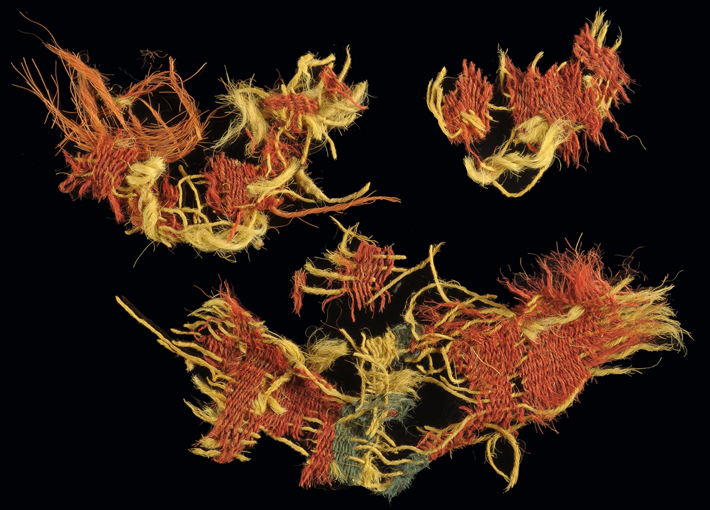Conspicuous Consumption
November/December 2017

Vividly colored red and blue fragments of wool discovered at a copper mining site in southern Israel’s Timna Valley are offering new insights into the social standing of metalworkers who lived in the remote area. The fragments, which have been radiocarbon dated to 3,000 years ago, are the earliest known examples of textiles treated with plant-based dyes in the Levant. But the plants used to make the dyes—the madder plant for red and most likely the woad plant for blue—could not have been grown in the arid Timna Valley. Nor was there enough water available locally to raise the livestock necessary to provide wool or to dye the fabric. The textiles must, therefore, have been produced elsewhere. According to Naama Sukinek of the Israel Antiquities Authority, the discovery suggests that at least some of the metalworkers at Timna had the resources to purchase this imported cloth. Says Sukinek, “Our finding indicates that the society in Timna included an upper class that had access to expensive and prestigious textiles.”